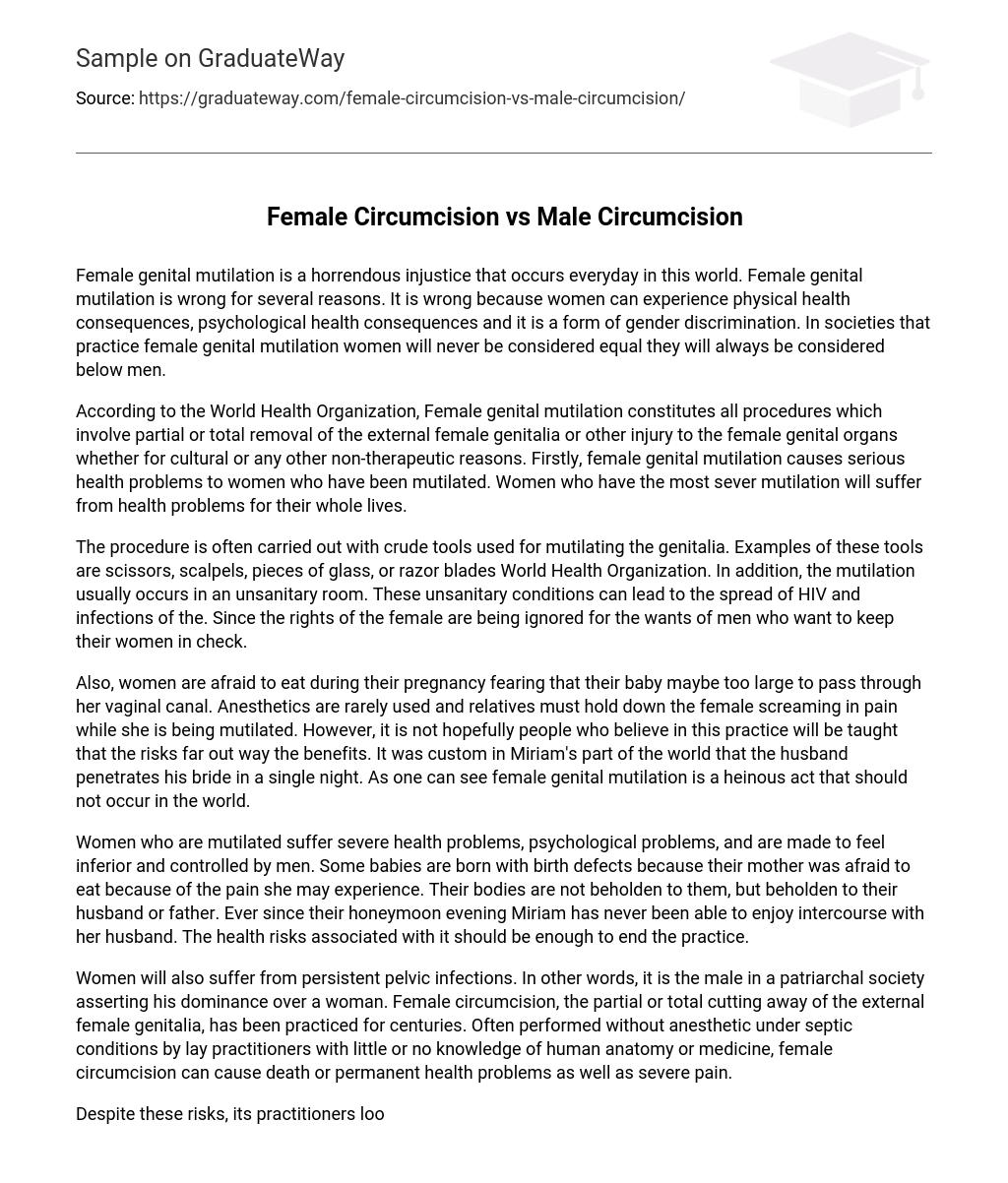Every day, female genital mutilation persists as a continuous global injustice. This practice unjustly impacts women’s physical and mental well-being while also perpetuating gender discrimination. Consequently, communities that partake in this ritual continue to foster the inequality of women by consistently viewing them as inferior to men.
The World Health Organization defines female genital mutilation as any non-therapeutic procedure that causes injury or removal of the female genitalia, regardless of cultural or other reasons. This results in enduring health complications for women who have undergone this practice.
According to the World Health Organization, female genital mutilation is commonly carried out using basic instruments like scissors, scalpels, glass fragments, or razor blades. Moreover, this harmful practice often occurs in unsanitary environments, raising the chances of HIV transmission and infections. The fundamental objective of this infringement on women’s rights is to exercise dominance over them based on male preferences.
Pregnant women often worry that eating during pregnancy will result in their baby being too big for natural delivery. During female genital mutilation, anesthetics are rarely used and it is common for female relatives to hold the woman down while she endures intense pain. It is important to educate practitioners about the many negative consequences of this tradition, which far outweigh any potential benefits. In Miriam’s community, husbands were expected to consummate marriages on the first night. Female genital mutilation is clearly a repugnant practice that should not exist in our society.
Female genital mutilation has detrimental impacts on women’s physical and mental well-being, while also perpetuating gender inequality and male dominance. Furthermore, infants may suffer from birth abnormalities as their mothers restrict food intake out of fear of pain. Instead of having autonomy over their own bodies, these women are subjected to the authority of their husbands or fathers. Miriam, for instance, has never had the chance to experience sexual pleasure since her wedding night. Eradicating this practice is crucial because of its inherent health hazards.
Women also face the consequences of enduring pelvic infections, which are essentially caused by male dominance in a patriarchal society. Throughout history, female circumcision has been conducted, which involves either partially or completely removing the external female genitalia. This procedure is usually done without anesthesia and in unsanitary conditions by untrained individuals who have no understanding of human anatomy or medicine. As a result, it can lead to death, long-term health problems, and extreme suffering.
Female circumcision, also known as female genital mutilation, is seen as an integral part of certain cultures and ethnic traditions. Some even view it as a religious obligation. However, critics consider this practice to be a violation of human rights. There are different forms of female circumcision, such as Type I (clitoridectomy), which involves the removal of the clitoral hood and possibly part or all of the clitoris. Type II (excision) entails removing both the clitoris and part or all of the labia minora.
Infibulation, also known as Type III, involves the removal of the external genitalia (clitoris, labia minora, and labia majora) and subsequent stitching or narrowing of the vaginal opening. This results in a very small opening similar in size to a matchstick, which allows for urination and menstruation. Supporters of this practice provide various reasons for its continuation including preserving virginity until marriage, ensuring marital fidelity, enhancing sexual pleasure for husbands, improving fertility rates, preventing infant and child mortality, maintaining cleanliness standards, and adhering to religious customs. However, tradition remains the main driving force behind its perpetuation.





